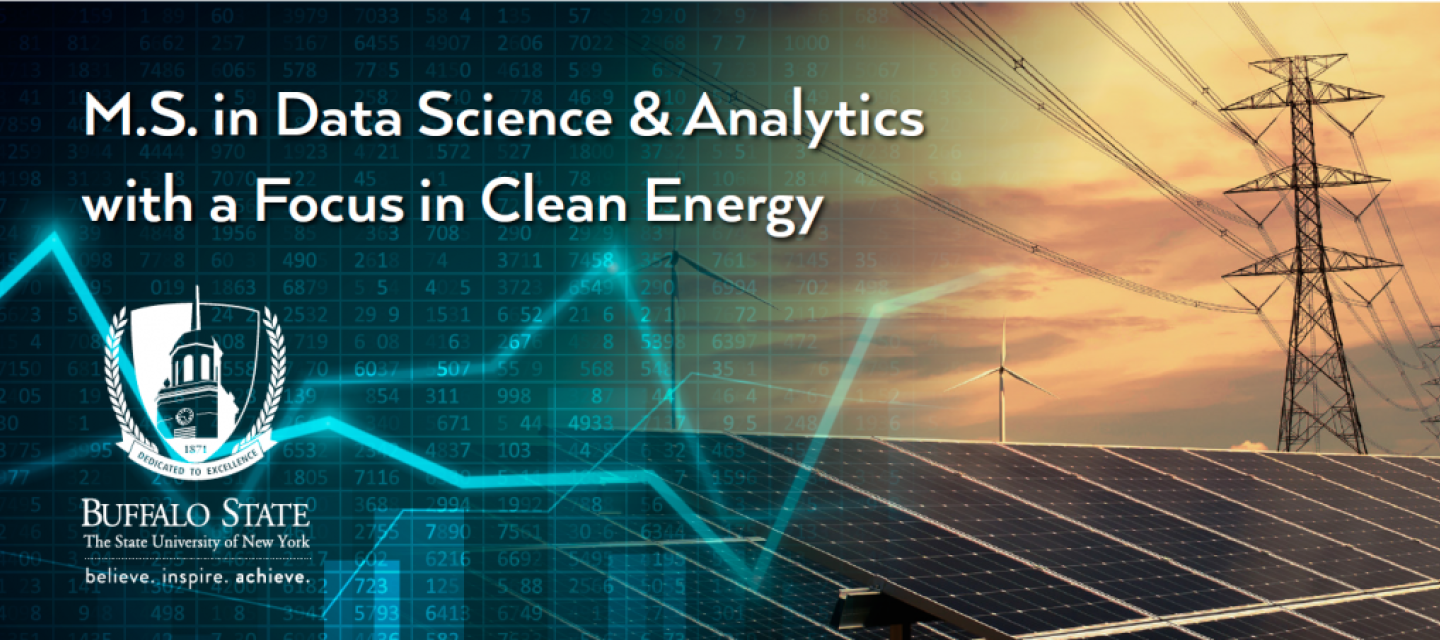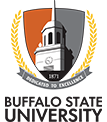
Clean Energy Analytics
The Buffalo State DSA program is pleased to offer students the ability to focus their studies in their industry of choice. Your coursework will be tailored to your individual interests with topics which may include:
Courses
DSA 621 Data Science Tools in Energy Engineering
Prerequisites: Instructor permission
Tools and techniques needed to collect, clean, analyze and present data specific to the field of Energy Engineering in large datasets; statistical models to describe data; visualization of data; spreadsheets; databases; data analysis software.
ENT 622 Machine learning for Material Science in Clean Energy
Prerequisite: ENT 621, or instructor permission
Cover broad guidelines and best practices regarding obtaining and treatment of data in materials science and device physics related directly to Clean Energy. Feature engineering, model training, validation, evaluation and comparison. Include interactive Jupyter notebooks with example Python code to demonstrate important concepts, workflows, and best practices in the field.
ENT 581 Renewable Distributed Generation and Storage
Prerequisites: ENT 331 Electric Circuits or equivalent, and ENT 671 Power Systems Analysis I or equivalent, or instructor’s permission.
This course introduces renewable and efficient electric power systems. It encourages self-teaching by providing numerous practical examples requiring quantitative analysis. Topics include historical, regulatory, and utility industry perspectives of the electric system as well as most of the electricity, thermodynamics, and engineering economics background needed to understand new power technologies.
ENT 582 Smart Grid from Systems Perspective
Prerequisites: ENT 331 Electric Circuits or equivalent, and ENT 671 Power Systems Analysis or equivalent, or instructor’s permission.
A comprehensive understanding of smart grid is needed for stakeholders to enable them to develop systems prospective of Smart Grid and its technologies, increase modeling of Smart Grid from multiple perspectives, to increase economic understanding and decision making around current and future technologies, to integrate the role of policy and politics in the advancement of Smart Grid over time, to understand how to educate others in Smart Grid, and to analyze basic subsystems of the Smart Grid.

